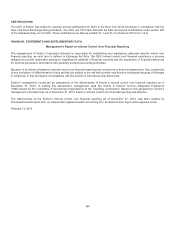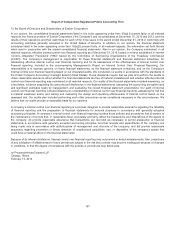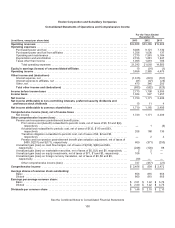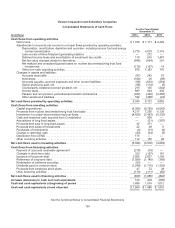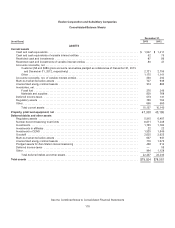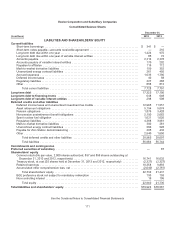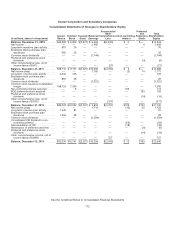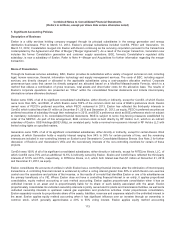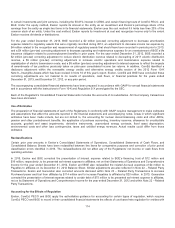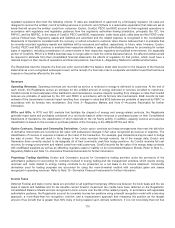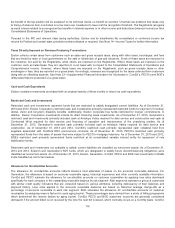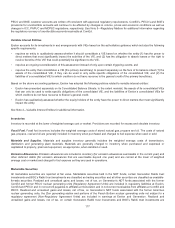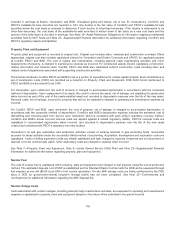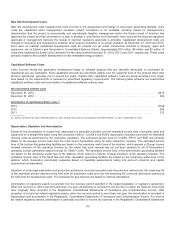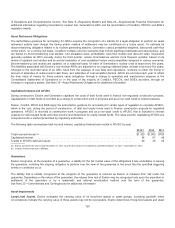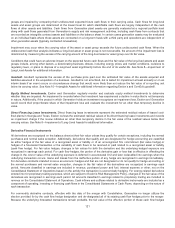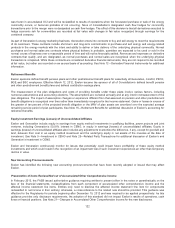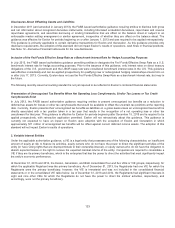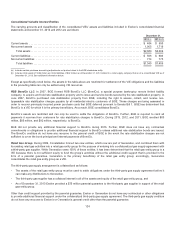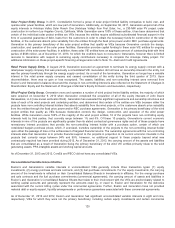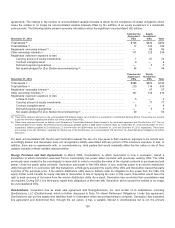ComEd 2013 Annual Report Download - page 122
Download and view the complete annual report
Please find page 122 of the 2013 ComEd annual report below. You can navigate through the pages in the report by either clicking on the pages listed below, or by using the keyword search tool below to find specific information within the annual report.thebenefitofthetaxposition will besustainedon itstechnical merits, no benefitis recorded. Uncertaintaxpositionsthat relate only
to timingofwhen an itemisincludedon a taxreturn are consideredto havemet therecognition threshold. TheRegistrantsrecognize
accruedinterest relatedto unrecognizedtaxbenefitsininterestexpenseorinother incomeanddeductions(interestincome)on their
ConsolidatedStatementsofOperations.
Pursuant to theIRCandrelevant state taxingauthorities, Exelon anditssubsidiariesfile consolidatedor combinedincometax
returnsfor Federal andcertainstate jurisdictionswhere allowedor required. See Note 14—IncomeTaxesfor further information.
Taxes Directly Imposed on Revenue-Producing Transactions
Exelon collectscertaintaxesfromcustomerssuch assalesandgross receiptstaxes, alongwithother taxes, surcharges, andfees
that are leviedbystate or local governmentson thesale or distribution ofgasandelectricity. Someofthesetaxesare imposedon
thecustomer,but paid by theRegistrants, while othersare imposedon theRegistrants. Where thesetaxesare imposedon the
customer,such assalestaxes, theyare reportedon a net basis withno impacttotheConsolidatedStatementsofOperationsand
ComprehensiveIncome.However,where thesetaxesare imposedon theRegistrants, such asgross receiptstaxesor other
surchargesor fees, theyare reportedon a gross basis. Accordingly, revenuesare recognizedfor thetaxescollectedfromcustomers
alongwithan offsettingexpense.See Note 23—Supplemental Financial Information for Generation’s, ComEd’s, PECO’s and BGE’s
utilitytaxesthat are presentedon a gross basis.
Cash and Cash Equivalents
Exelon considersinvestmentspurchasedwithan original maturityofthree months or less to becash equivalents.
Restricted Cash and Investments
Restrictedcash andinvestmentsrepresent funds that are restrictedto satisfy designatedcurrent liabilities. AsofDecember 31,
2013 and2012,Exelon Corporate’s restrictedcash andinvestmentsprimarilyrepresentedrestrictedfunds for payment ofmedical,
dental, vision andlong-term disabilitybenefits. Additionally, Exelon Corporate hasfunds restrictedfor merger commitments. In
addition,Exelon Corporate’s investmentsincludeitsdirectfinancingleaseinvestments. AsofDecember 31,2013,Generation’s
restrictedcash andinvestmentsprimarilyincludedcash at Antelope Valleyrequiredfor debtserviceandconstruction andcash at
Continental Windrequiredfor debtserviceandfinancingofoperation andmaintenanceoftheunderlyingentities. Asof
December 31,2012,Generation’s restrictedcash primarilyincludedcash at Antelope Valleyrequiredfor debtserviceand
construction.AsofDecember 31,2013 and2012,ComEd’s restrictedcash primarilyrepresentedcash collateral heldfrom
suppliersassociatedwithComEd’s REC procurement contracts. AsofDecember 31,2013, PECO’s restrictedcash primarily
representedfunds fromthesalesofassetsthat were subjecttoPECO’s mortgageindenture.AsofDecember 31,2013 and2012,
BGE’s restrictedcash primarilyrepresentedfunds restrictedat itsconsolidatedvariable interest entityfor repayment ofrate
stabilization bonds.
Restrictedcash andinvestmentsnot available to satisfy current liabilitiesare classifiedasnoncurrent assets. AsofDecember 31,
2013 and2012,Exelon’s andGeneration’s NDT funds, which are designatedto satisfy future decommissioningobligations, were
classifiedasnoncurrent assets. AsofDecember 31,2013,Exelon,Generation,ComEd, PECO and BGE hadinvestmentsinRabbi
trustsclassifiedasnoncurrent assets.
Allowance for Uncollectible Accounts
The allowancefor uncollectible accountsreflectsExelon’s bestestimatesoflosseson theaccountsreceivable balances. For
Generation,the allowanceis basedon accountsreceivable aging, historical experienceandother currentlyavailable information.
ComEd and PECO estimate the allowancefor uncollectible accountson customer receivablesbyapplyingloss ratesdeveloped
specificallyfor each companyto the outstandingreceivable balanceby risk segment.Risk segmentsrepresent a group ofcustomers
with similar creditqualityindicatorsthat are computedbasedon variousattributes, includingdelinquency oftheirbalancesand
payment history. Loss ratesappliedto theaccountsreceivable balancesare basedon historical averagecharge-offs asa
percentageofaccountsreceivable ineach risk segment. BGE estimatesthe allowancefor uncollectible accountson customer
receivablesbyassigningreservefactorsfor each agingbucket.These percentageswere derivedfromastudy ofbillingprogression
which determinedthereservefactorsbyagingbucket.ComEd, PECO and BGE customers’ accountsare generallyconsidered
delinquent if theamount billedisnot receivedbythetimethenextbill is issued, which normallyoccurson a monthlybasis. ComEd,
116


